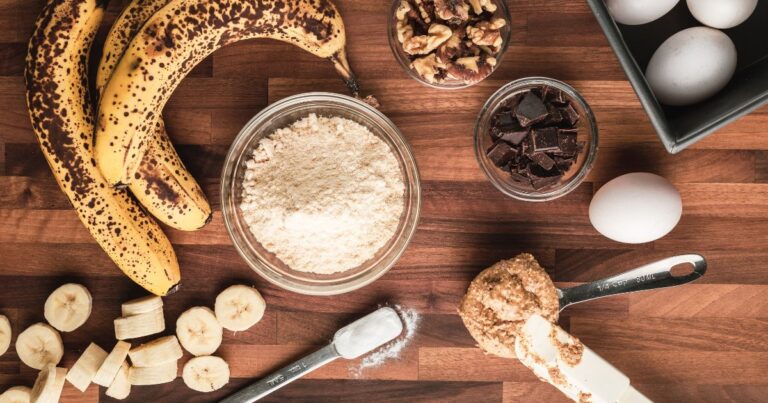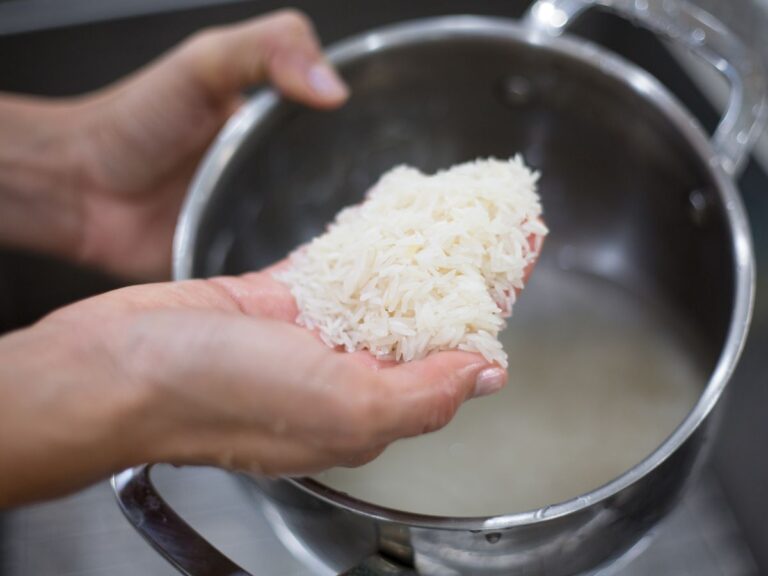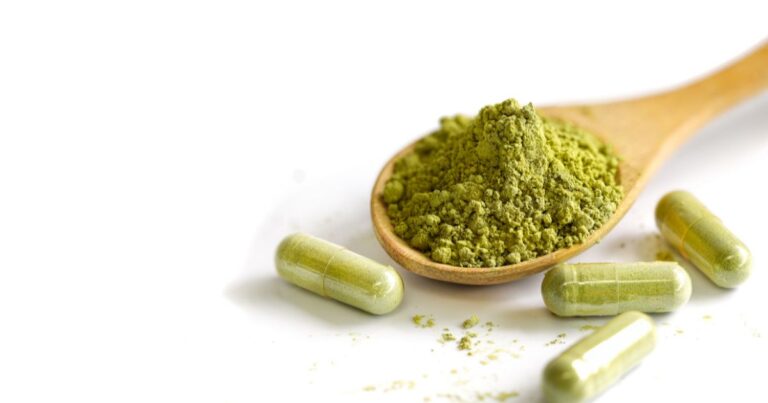Chai Tea Main Flavor Profile: Notes of Spices
Have you ever walked past someone brewing a fresh cup of chai tea and wondered, ” What Does Chai Taste Like?”. Maybe you have never tried it before or love it so much but can’t quite put your finger on what flavor notes are hitting the tip of your tongue. Is it Cinnamon or Ginger, black Tea or green? Let’s break it all down one sip at a time.
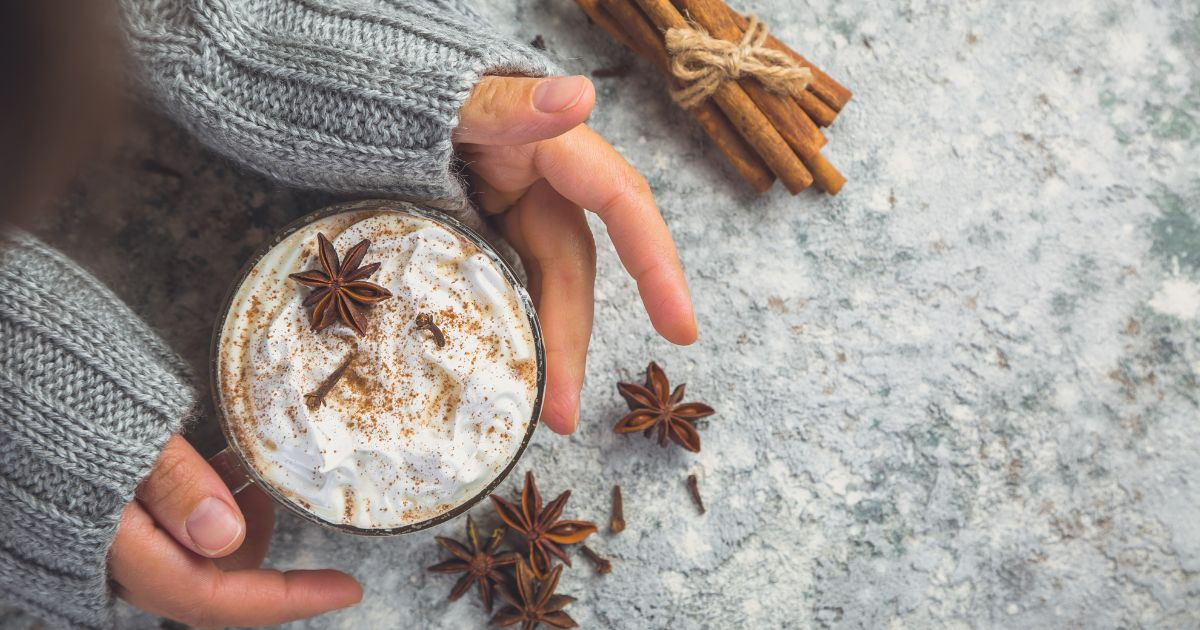
I’ve always found chai to be more than just a beverage; it’s a journey in a cup, a story told through spices and aromas.
Traditional chai tea holds a special place in the world of flavors and aromas. It’s more than a chai tea latte; it’s a symphony of spices and sensations, each sip telling a story of tradition and innovation.
As someone who has spent years mastering the delicate balance of flavors in chai, I find it a fascinating blend of art and science.
In this journey through the nuances of chai, we’ll explore everything from its digestive benefits to its storied history and, of course, the art of brewing it to sheer perfection.
While chai commands its unique presence, the principles of brewing a perfect cup can also apply to other teas, like understanding how to brew lion’s mane tea or a nice cup of coffee, another favorite of connoisseurs.
So, grab your favorite mug, and let’s get a jump start on this flavorful caffeinated Chai exploration together.
Table of Contents
What Does Chai Taste Like?
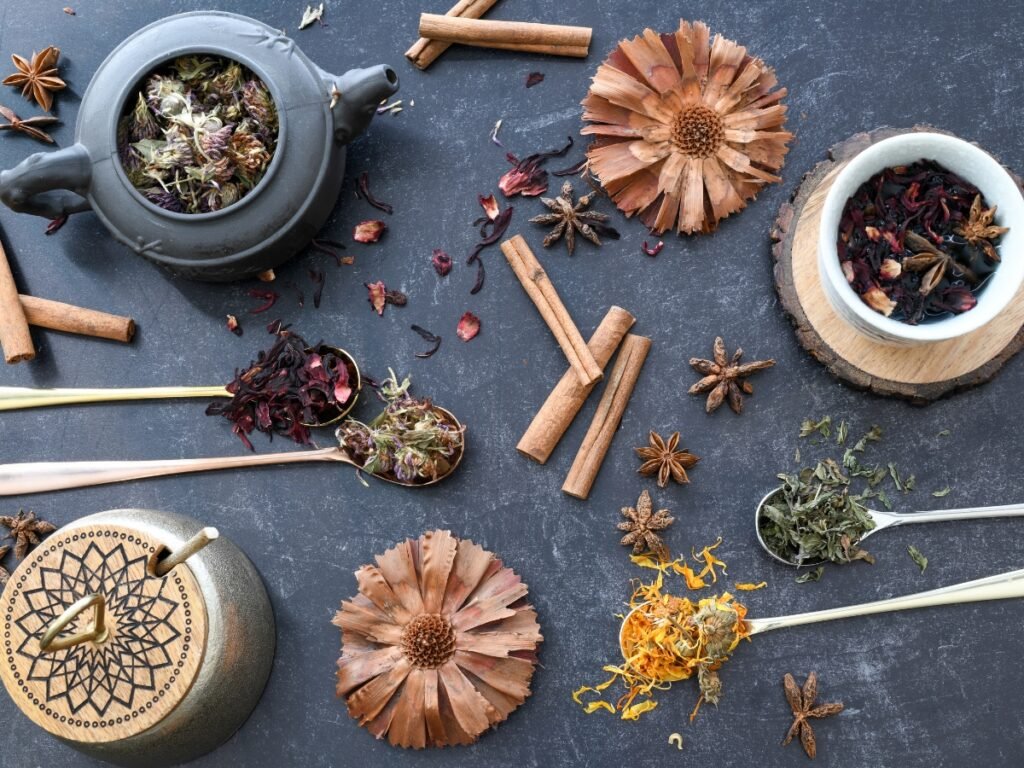
Chai isn’t just a loose-leaf tea; it’s a masterful, unique, and flavorful beverage, a dance of spicy flavor I deeply appreciate.
When you take that first sip, here’s what unfolds:
Spicy Warmth
It starts with a kick of star anise. The peppery heat from ginger and black pepper tingles on the tongue, an awakening jolt unmistakably chai tea taste.
Sweet Whispers
Then comes the sweetness. Not the sentimental kind, but a subtle nudge from cinnamon and cardamom. It’s like a gentle melody playing in the background, rounding off the sharp edges of the spices.
Creamy Caress
Steamed Milk enters the scene, transforming the experience. It softens the chai spice, adds body, and brings a comforting creaminess. This isn’t just about taste; it’s about texture, too.
Earthy Base
And then, the foundation – the tea itself. Robust, a bit astringent, providing an earthy canvas for the spices to shine. It holds everything together, the steady undercurrent in this flavorful voyage.
What makes chai truly special is its versatility. I’ve seen it change from region to region, kitchen to kitchen. Some like it sweeter; others prefer a fiercer hit of spice. And that’s the beauty of it – chai invites you to play, to experiment until you find your perfect blend.
A Sip Through History

The story of traditional masala chai is as rich and layered as its flavor. Tracing its origins takes us back centuries to ancient India. Here’s a glimpse into its fascinating journey:
Ancient Roots: Chai didn’t start as the beverage we know today. It began as a medicinal concoction in Ayurveda, using a variety of spices for health benefits sans tea leaves.
British Influence: Fast forward to the British colonial era. The British East India Company began cultivating tea in Assam, seeking to compete with Chinese tea. It was then that the tea leaf made its debut in the traditional chai recipe.
Railway Era: Chai’s popularity soared with the expansion of the Indian railway network. Vendors called ‘chai wallahs’ started selling their unique versions of this spiced tea to travelers, making it a staple of Indian culture.
Every region in India has its version of chai, and as it traveled, it morphed and adapted. Masala chai, the spiced tea we’re familiar with, became famous worldwide, but this was just one of many variations.
Global Brew: From street corners in Mumbai to trendy cafes in New York, chai pairings have captivated taste buds worldwide. It’s fascinating how different cultures have embraced and adapted chai, adding their local flavors and ingredients like an iced chai latte or chai tea lattes.
Health Benefits of Chai
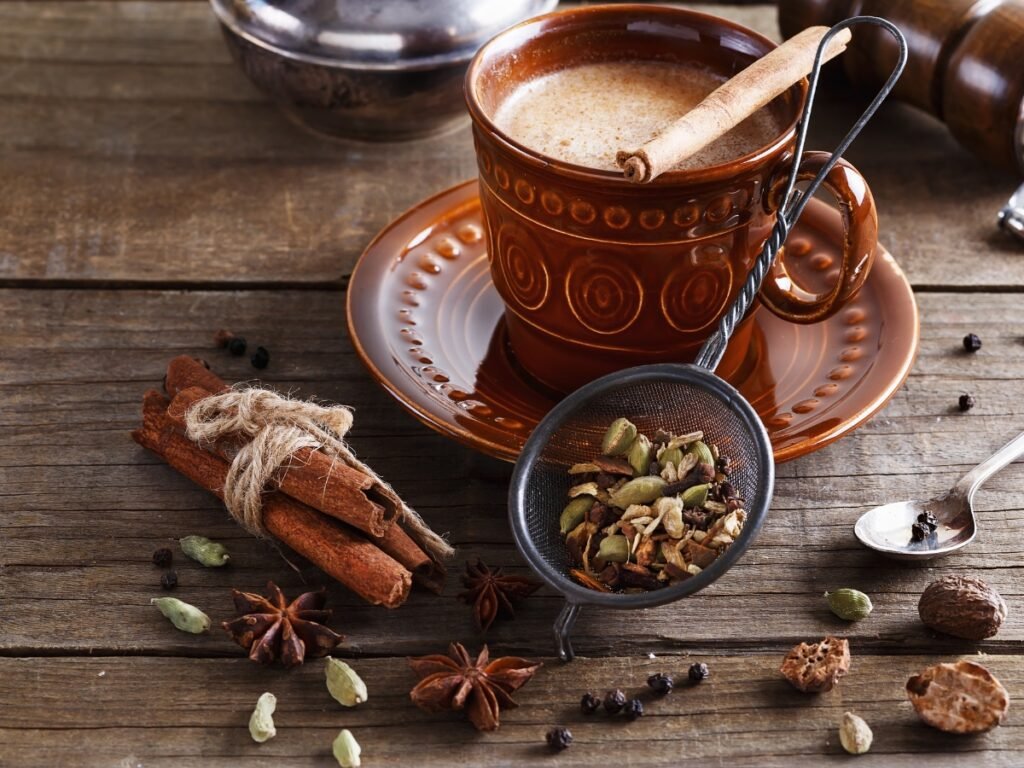
I’ve always been intrigued by how our ingredients can benefit our health; chai is a prime example. Each spice in chai isn’t just a spicy flavor profile component; it’s a powerhouse of health benefits.
Ginger: This root is a hero in digestion aid. It’s known for its anti-inflammatory properties and ability to soothe an upset stomach.
Cinnamon: Beyond its sweet aroma, cinnamon is celebrated for its antioxidant properties. It’s also linked to lowering blood sugar levels and reducing the risk of heart disease.
Cardamom: This fragrant spice isn’t just for flavor. It’s often used in traditional medicine for its potential to lower blood pressure and aid in digestive problems.
Cloves and Black Pepper: Both spices are known for their anti-inflammatory and antibacterial properties. They’re like the secret warriors of chai, fighting off infections and boosting overall health.
Now, while chai can be a healthful drink, remember, the way you prepare it can make a difference. While delicious, adding brown sugar, cream, or soy milk can offset some health benefits.
As a rule of thumb, I recommend enjoying chai in its simplest form to reap these benefits. Avoid sugar syrup and oat milk or anything that can genuinely affect the distinct taste of the chai blend.
Brewing the Perfect Cup of Chai
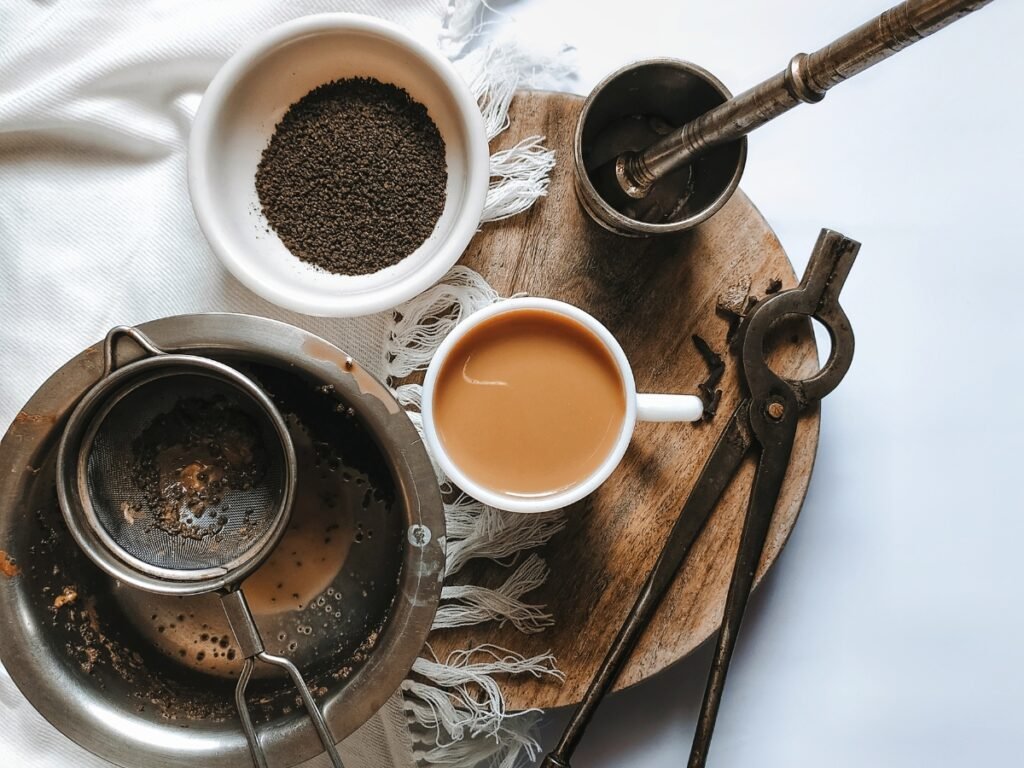
Brewing chai is an art; like any art, it’s all about balance and technique. Here’s how you can brew a cup of chai that’s just right every time:
The Basics:
Choice of Tea: Start with a strong black tea, like Assam or Darjeeling. This forms the robust base of your chai tastes.
Fresh Spices: Freshly ground spices make a world of difference. Cardamom, ginger, cinnamon, cloves, and black pepper are the usual suspects but feel free to experiment.
Milk Ratio: The ratio of milk to water can vary, but a good starting point is half milk, half water. Adjust according to how creamy you like your chai.
Brewing Steps:
Simmer the Spices: Begin by simmering your spices in water. This extracts their flavors more effectively.
Add Tea Leaves: Once the water is fragrant, add your tea leaves and let them steep.
Milk and Sweeten: Add milk and bring to a simmer again. If you like your chai with a sweet taste, this is the time to add sugar, your preferred sweetener, or that packet of sugar in the raw you stole from your local coffee shops.
Strain and Serve: Strain the chai into your favorite mug.
Tips for Perfection:
Slow and Steady: Don’t rush the process. Letting the spices and tea simmer slowly enhances the flavor.
Quality Ingredients: The better your tea and spices, the better your chai will taste.
Personal Touch: Play around with the types and quantities of spices. Chai is personal, and finding your perfect blend is part of the fun.
Chai Beyond the Cup
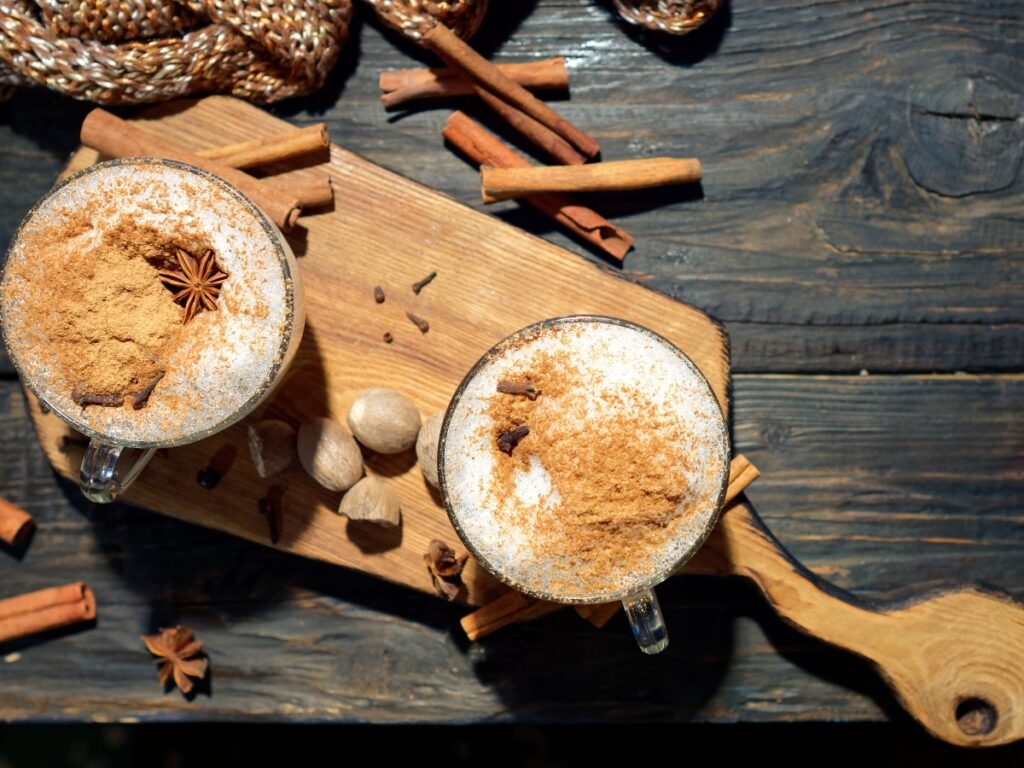
Chai, with its versatile palette of flavors, extends beyond a hot beverage; it’s a culinary chameleon. Here’s how you can infuse the essence of chai into more than just your morning cup.
Chai in the Kitchen:
Chai Latte: Blend your brewed chai with frothed milk for a quick, modern twist. Add a dash of vanilla extract or vanilla extract, almond milk, or even a sprinkle of cinnamon for a cozy, cafe-style dirty chai latte.
Chai-Infused Baking: Imagine the aroma of Kashmiri chai spices in your baked goods. From chai-spiced cookies to moist chai-infused cakes, the possibilities are endless.
Chai Desserts: Elevate your desserts with a touch of chai. Chai-spiced custards or puddings can be a delightful end to any meal.
Pairing with Foods:
Complementary Flavors: Chai pairs beautifully with certain foods. Think of nutty, warm flavors or slightly sweet and rich dishes.
Breakfast and Brunch: Enjoy it with a slice of banana bread, a warm oatmeal bowl, or your morning granola.
Afternoon Snacks: Drink Chai and biscuits or scones, which make for a classic combination. It’s a perfect pairing for a mid-afternoon pick-me-up.
Experimentation is Key:
Remember, the world of chai is vast and open to interpretation. Don’t be afraid to experiment with different spices or to introduce chai into various aspects of your cooking. It’s about finding that perfect balance that resonates with your palate.
Conclusion
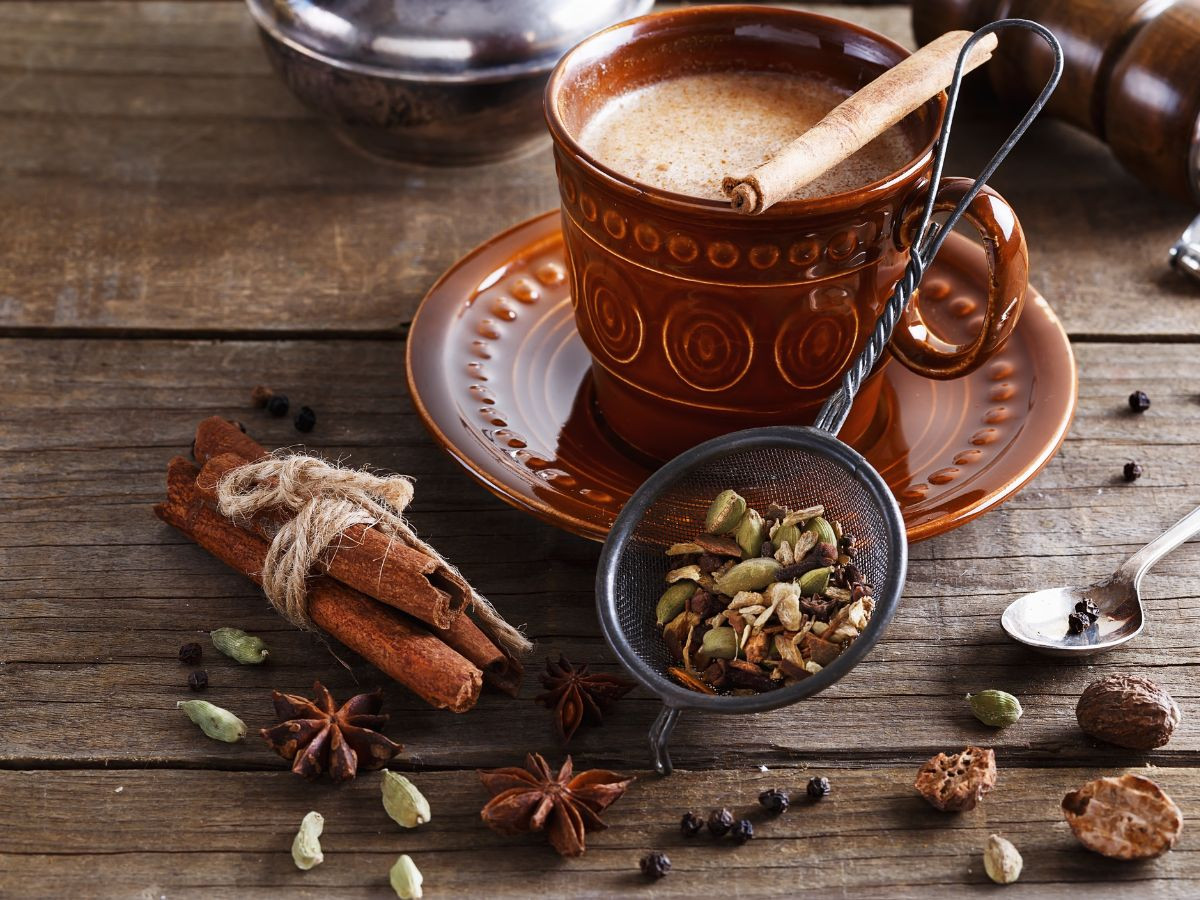
As we end our flavorful journey through the world of chai, it’s clear why this beverage holds a special place in so many cultures.
Chai isn’t just a drink; it’s a narrative of tradition, a canvas for creativity, and a testament to the timeless allure of well-balanced flavors.
A Blend of Cultures: Chai transcends geographical and cultural boundaries, adapting and evolving with each new interpretation. It’s a beautiful blend of tradition and modernity.
Versatility in a Cup: Whether enjoyed in its traditional form or as a base for innovative culinary creations, chai offers versatility that few other beverages can match.
A Personal Experience: The beauty of chai lies in its personalization. Each cup reflects individual tastes and preferences, making every chai experience unique.
I’ve always appreciated the complexity and flexibility of chai. It’s a reminder of how simple ingredients, when combined with skill and care, can create something truly extraordinary.
I encourage you to explore the depths of chai tea flavors and the great chai coffee taste, experiment with flavors and techniques, and find your perfect brew.
FAQ and Additional Information
Chai Tea Vs. Green Tea
Chai Tea
Flavor Profile: Chai is known for its bold, spicy, sweet flavors. The traditional version includes black tea blended with strong spices like cardamom, cinnamon, ginger, cloves, and black pepper. It’s often brewed with milk and sweetened, which adds a creamy texture and a sweetness that balances the spices.
Preparation: Brewing chai involves simmering the tea and spices in water and milk, followed by sweetening. It’s a more involved process that allows the flavors of the spices to develop fully.
Caffeine Content: Chai, made with black tea, has a moderate caffeine content, generally less than coffee but more than green tea.
Health Benefits: The spices in chai offer various health benefits. For example, ginger aids in digestion, cinnamon has anti-inflammatory properties, and cardamom may help lower blood pressure.
Cultural Significance: Chai has deep cultural roots in India and has become popular worldwide, often enjoyed as a comforting, warming beverage.
Green Tea
Flavor Profile: Green tea is known for its more delicate, earthy, and sometimes grassy flavor. It lacks the added spices and sweetness of chai and is appreciated for its subtle, clean taste.
Preparation: Preparing green tea is typically more straightforward. It involves steeping the leaves in hot water. The key is to use the proper temperature (not boiling) to avoid bitterness.
Caffeine Content: Green tea generally has a lower caffeine content than chai. It’s a good option for those looking for a mild energy boost without the jolt of coffee or black tea.
Health Benefits: Green tea is renowned for its antioxidants, particularly catechins, which are linked to various health benefits like improved brain function, fat loss, and a lower risk of heart disease.
Cultural Significance: Originating in China and widely consumed across Asia, green tea is integral to many cultural ceremonies, especially in Japan with the traditional Japanese tea ceremony.
What Is Masala Chai?
Masala Chai, a term that translates to “spiced tea” in Hindi, is a traditional Indian beverage that has gained immense popularity worldwide.
As a chef interested in flavors, Masala Chai is a fascinating blend of culture, tradition, and taste. Here’s a detailed look at what Masala Chai is:
Ingredients and Flavor
Base Tea: The foundation of Masala Chai is usually a solid black tea, like Assam or Darjeeling.
Spice Blend (Masala): The defining characteristic of Masala Chai is its blend of spices. Commonly used spices include cardamom, cinnamon, ginger, cloves, and black pepper. However, the mix can vary greatly depending on regional or personal preferences.
Milk and Sweeteners: Typically, Masala Chai is prepared with milk, which adds a creamy texture and balances the spices’ robust flavors. It’s also sweetened, often with sugar, but alternatives like honey or jaggery can be used.
Preparation
Brewing Method: The traditional method involves simmering or boiling water, tea, spices, and milk, then adding a sweetener. This process allows the flavors to meld together and intensifies the taste.
Customization: The strength of tea, the choice and proportions of spices, and the amount of milk and sweetener can all be adjusted to personal taste, making each cup of Masala Chai unique.
Cultural Significance
Origins in India: Masala Chai has been a staple in Indian households for centuries, evolving from ancient Ayurvedic practices that used spices for their health benefits.
Daily Ritual: In India, chai is more than just a drink; it’s a daily ritual, a reason for gatherings, and a welcome break in the day.
Global Popularity: Masala Chai has transcended its origins to become a beloved beverage worldwide, enjoyed in various forms, from traditional recipes to modern adaptations like chai lattes.
Health Benefits
Spices: Each spice in Masala Chai is not just flavorful but also offers health benefits. For instance, ginger aids in digestion, cinnamon supports metabolic health, and cardamom has anti-inflammatory properties.
Balancing Act: While Masala Chai can be healthful, adding sugar and milk can add calories. Using minimal sweeteners and choosing lower-fat milk options can make it healthier.
What does Chai taste similar to?
Chai, with its distinctive blend of spices, tea, milk, and sweetness, offers a unique flavor profile that is quite different from most other beverages. However, if we were to draw comparisons, there are a few drinks and flavors that come somewhat close to the taste of chai:
Pumpkin Spice Latte: This popular coffee drink shares similar spice notes with chai, especially cinnamon, nutmeg, and cloves. The creamy texture from the milk and the sweetness also makes it somewhat reminiscent of chai, although it’s coffee-based and features pumpkin flavor.
Spiced Apple Cider: The warm, comforting spices used in apple cider, like cinnamon and cloves, are also common in chai. While chai has a tea base and apple cider is fruit-based, the spiced aspect of both drinks is somewhat similar.
Gingerbread: In terms of food, the flavor of gingerbread cookies or cake is quite similar to chai due to the use of ginger, cinnamon, and sometimes cloves. These spices create a warm, slightly spicy, and sweet profile characteristic of chai.
Yogi Tea or Spiced Herbal Teas: Certain herbal teas that emphasize spices like cinnamon, cardamom, and ginger can have a flavor profile that reminds one of chai, minus the black tea base and milk.
Sweetened and Spiced Milk: Warm, sweetened milk infused with spices like cardamom, cinnamon, and cloves can also resemble the flavor of chai, especially if it’s made without the tea component.
Christmas Beverages: Various traditional Christmas beverages, like mulled wine or eggnog, have a spice blend (cinnamon, nutmeg, cloves) that can be reminiscent of the warm and cozy feeling you get from a cup of chai.



